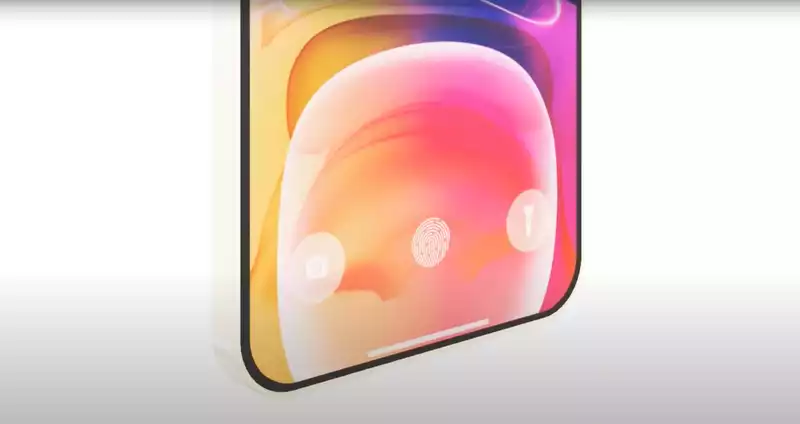There have been multiple reports that Apple is working on developing a Touch ID under the display for a future iPhone, possibly the iPhone 14. And now, thanks to Apple's new patents for integrating biometrics into iPhones and MacBooks, the rumors have gained even more weight.
This is not the first time Apple has been granted a patent for under-display biometric technology, but this new patent pertains to both cell phones and laptops. Neither the iPhone nor the MacBook are specifically mentioned as regulars in the patent, but it is believed that Apple has these products in mind.
It remains to be determined whether the next iPhone, believed to be the iPhone 13, or the iPhone 14, will be the first to feature a below-display version of Touch ID. Currently, the latest rumors suggest that the iPhone 14 will feature such biometric technology, while the iPhone 13 will use Face ID, albeit in a smaller display notch.
Android phones have long had finger sensors under the display, but Apple's recent iPhones have relied on either a scanner built into the home button, as seen on the iPhone SE, or Face ID, like the iPhone 12. But while Face ID may be secure, it is incompatible with face masks, which have naturally become heavily used in the current coronavirus pandemic.
In addition, the CDC has just changed its guidance on mask use, recommending that in areas with "substantial" and "high" transmission of Covid-19, masks be used indoors, even by those who have been vaccinated.
Thus, a reworking of Touch ID to embed fingerprint scanning technology under the display of future iPhones would certainly be welcome. It is unclear how useful this feature will be in 2022. However, if an alternative to Face ID is introduced, iPhone fans will have more options for authentication methods.
This could be one compelling reason to hold off on getting the iPhone 13, which is expected to debut this September. Early iPhone 14 rumors also point to a titanium alloy design, a sharper 48MP main camera, and a possible periscope zoom feature.
Comparatively, the iPhone 13 is said to be more of an evolution rather than a major overhaul of the iPhone 12. iPhone 13 will have a faster and more efficient A15 Bionic chip, camera upgrades like astrophotography mode, and better 5G, smaller notch are said to be included. Rumors suggest that the iPhone 13 Pro model is expected to feature an always-on display with a 120 Hz refresh rate and an improved ultra-wide camera, which is more expected.
One of the more interesting elements of this new patent is that it suggests that Touch ID could be embedded in the Touch Bar of a future MacBook Pro.
We have heard rumors that the divisive Touch Bar may be eliminated for the MacBook Pro 2021, which will be available in 14- and 16-inch sizes and is said to feature the performance-oriented M1X chip, an upgrade to the Apple M1 chip There have been rumors that the divisive Touch Bar may be eliminated.
However, this patent suggests that may not be the case, and at least some next-generation MacBook Pro models will retain the Touch Bar. However, the current MacBook Pro uses a Touch ID sensor on the right side of the Touch Bar. Therefore, it is unlikely that placing such a sensor below the Touch Bar would make a noticeable difference.
We would rather see Face ID integrated into future MacBooks in some form, and with new rumors of Face ID in the next-generation iMac, that is a distinct possibility. However, don't expect to see it anytime soon.
While much of the above is logical speculation based on new patents, it should be noted that some patents may not lead to new features or products. However, the possibility that Touch ID may finally return to the iPhone remains a positive sign.










Comments